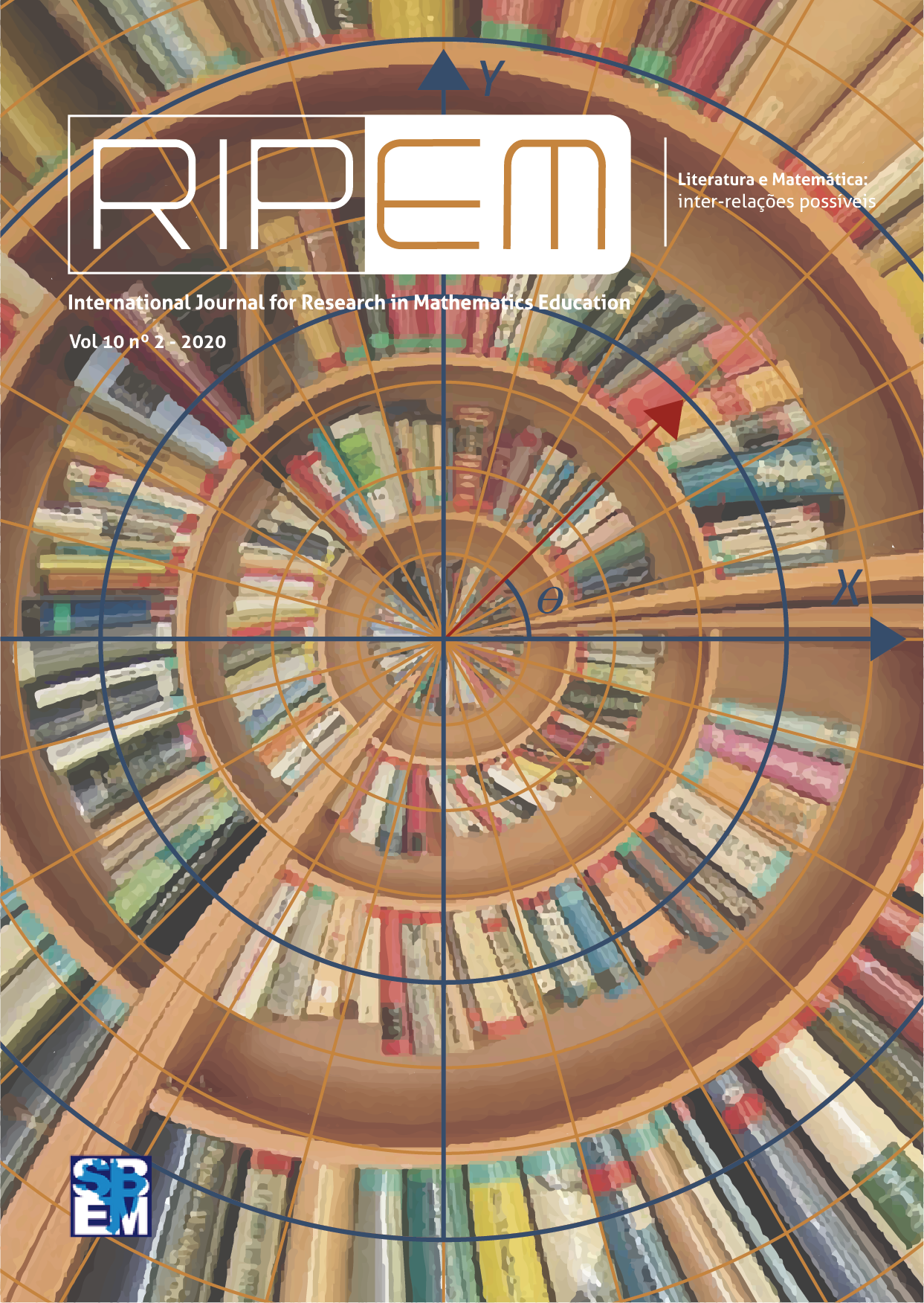M athematics and childrens literature: a book, a game and the challenge of drawing time
DOI:
https://doi.org/10.37001/ripem.v10i2.2169Keywords:
Continuity. Time, Children’s Literature, Mathematics TeachingAbstract
This present article presents the cut of a master’s research that investigated connections between mathematics and children’s literature. The activities proposed of the book Contagem Regressiva ”, our object of analysis, it was carried out with a Preschool Class of a public s chool fro m Rio Grande do Sul. The book’s exploration and the counting suggested by them led to a game. It led students to observation of an analog clock. Children aged five and
six years made records. These records evidence the ir hypotheses about time pass ing and continuity notions, it alerts us to pedagogical potencial of analog clocks in the construction of
time’s concept and in the understanding about the measured time’s instruments. Besides this,
the study reinforces the imp ortance of narrative and play fulness o n little children’s development. Working with children’s reading books empowers the exploration of complex mathematical concepts intuitively.
Downloads
References
Arnold, D.S. (2016). Matemáticas presentes em livros de leitura: possibilidades para a Educação Infantil. Dissertação de Mestrado. Universidade Federal do Rio Grande do Sul, Porto Alegre, Brasil.
Cartaxo,S.R.M. (2011). Pressupostos da Educação Infantil. Curitiba: Ibpex.
Coelho, N. N. (2015). Literatura Infantil: teoria, análise, didática. 7. ed. São Paulo: Moderna.
Dalcin, A. (2002). Um olhar sobre o paradidático de matemática. Dissertação de Mestrado. Universidade Estadual de Campinas, Campinas, Brasil.
Deleuze, G. (2003). Proust e os signos. 2.ed. trad. Antonio Piquet e Roberto Machado. Rio de Janeiro: Forense Universitária.
Dienes, Z. P. (1969). Os primeiros passos em matemática: exploração do espaço e prática da edição. São Paulo: Editora Herder.
Duhalde, M. H.; Cuberes, M.T. G. (1998). Encontros iniciais com a matemática: contribuições à educação infantil. Porto Alegre: Artes Médicas.
Elias, N. (1998). Sobre o Tempo. Rio de Janeiro: Jorge Zahar.
Grando, R. C.; Moreira, K.G. (2012). Como crianças tão pequenas, cuja maioria não sabe ler nem escrever, podem resolver problemas de matemática? In: Carvalho, M.; Bairral, M. A. (Orgs.) Matemática e educação infantil: investigações e possibilidades de práticas pedagógicas. Rio de Janeiro: Vozes.
Machado, N. J. (2011). Matemática e lÃngua materna: análise de uma impregnação mútua. 6. ed. São Paulo: Cortez.
Pelhan, S. (2013). Contagem Regressiva. São Paulo: Ciranda Cultural.
Smole, K. (1993). Era uma vez na matemática: uma conexão com a literatura infantil. São Paulo: IME-USP.
Tripp, D. (2005, set./dez). Pesquisa-ação: uma introdução metodológica. Educação e Pesquisa, 31 (3), 443-466.
Whitrow, G. J. (2005). O que é tempo? Uma visão clássica sobre a natureza do tempo. (Trad. de Maria Ignez Duque Estrada). Rio de Janeiro: Jorge Zahar Editor.
Published
How to Cite
Issue
Section

This work is licensed under a Creative Commons Attribution-NonCommercial-NoDerivatives 4.0 International License.








